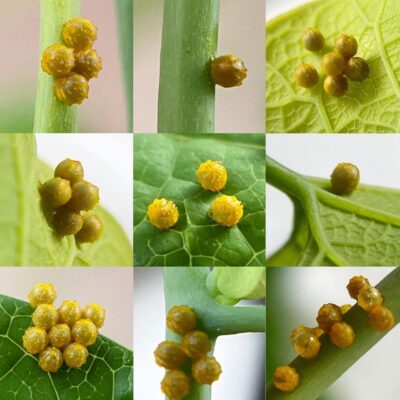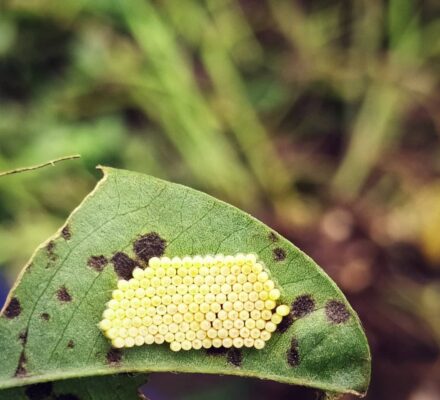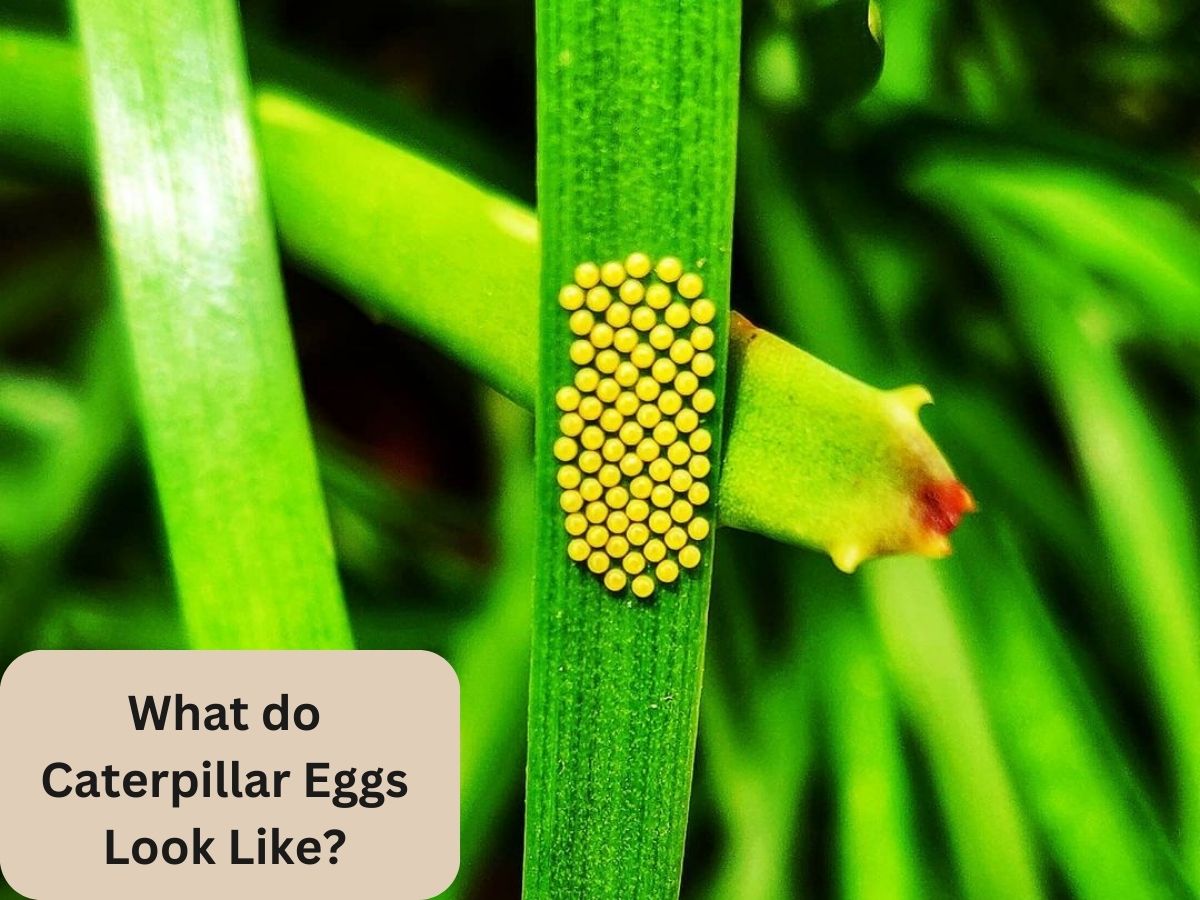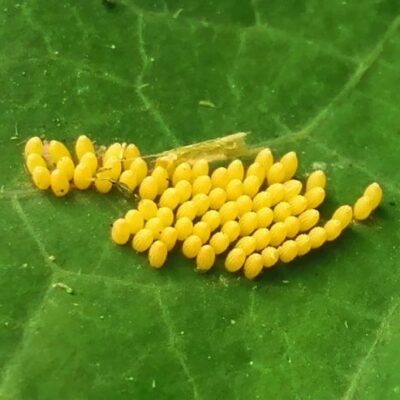Curious about the hidden world of caterpillar life? “What do caterpillar eggs look like” is a question that unveils a fascinating realm of nature’s wonders.
These tiny eggs, often unnoticed, hold the key to the incredible metamorphosis that follows. Imagine a minuscule structure containing the blueprint for a future butterfly or moth. Delve with us into the realm of these captivating eggs, where shapes, colors, and textures vary as much as the species they belong to.
From vibrant hues to intricate patterns, these eggs are as diverse as the creatures they nurture. Join us as we explore the mesmerizing world of caterpillar eggs, unveiling the secrets that lay the foundation for one of nature’s most enchanting transformations.
As we peel back the layers of this miniature marvel, get ready to discover the awe-inspiring beauty that emerges from the tiniest of beginnings.
The Fascinating World of Caterpillar Eggs
When it comes to the intricacies of nature’s grand tapestry, few things rival the significance of caterpillar eggs in the captivating life cycles of butterflies and moths. These diminutive capsules are like nature’s time capsules, holding the promise of transformation and renewal.
The butterfly and moth life cycle begins with the laying of eggs – a process that might seem subtle but is paramount to the continuation of these exquisite insects’ lineage. Imagine if the delicate flutter of a butterfly’s wings or the soft glow of a moth under moonlight were to vanish. It’s the existence of these tiny eggs that ensures these wonders grace our world.
From the majestic monarch butterflies to the elegant swallowtails and the cryptic tiger moths, an array of butterfly and moth species take part in this ancient ritual of egg-laying. What’s even more captivating is the sheer diversity in their appearance. Some eggs are meticulously ribbed, resembling miniature jewels delicately placed on leaves. Others might be spherical and discreet, blending seamlessly with their surroundings, a testament to nature’s artistry in camouflage.
As we delve into the universe of caterpillar eggs, keep in mind that each egg carries not just the promise of life but also a glimpse into the vast variety of forms and colors that grace our natural world.
What exactly are caterpillar eggs?
Caterpillar eggs are the tiny, delicate beginnings of the mesmerizing metamorphosis that leads to the emergence of butterflies and moths. These minuscule capsules, often no larger than a pinhead, hold within them the blueprint for the wondrous journey that lies ahead.
What Do They Look Like?
Picture this: a tiny, oval-shaped wonder, intricately adorned with details that hint at the beauty it conceals. The appearance of caterpillar eggs varies greatly from species to species, but they all share the common characteristic of being a fraction of the size of a fingernail.

From pale greens that harmonize with leaves to vibrant yellows and soft blues that catch the eye, caterpillar eggs showcase an array of colors. Their shapes can be equally diverse – spherical, cylindrical, or even subtly ridged. These variations in color and shape often serve as nature’s signature, allowing us a sneak peek into the world that’s about to unfold.
So, next time you’re peering closely at a leaf, take a moment to appreciate the intricate marvel of a caterpillar egg – a small package that holds the promise of transformation in its most delicate form.
Where Are Caterpillar Eggs Usually Found?
Nature’s artistry often lies in the details, and when it comes to caterpillar eggs, their placement is no exception. These tiny capsules are strategically tucked away in locations that ensure the best possible start for the future caterpillars.
Commonly, you’ll find caterpillar eggs nestled on the undersides of leaves, a choice spot that provides protection from rain and predators. This location also offers a close proximity to the caterpillar’s future food source – the leaves themselves. Stems of plants, twigs, and even structures nearby might also host these hidden treasures.
It’s a delicate balance between accessibility and safety that guides the egg-laying process. Whether it’s a leaf dancing in the breeze or a quiet corner on a plant, these chosen spots become the incubators of life, setting the stage for the spectacular journey ahead.
How Are Caterpillar Eggs Typically Laid?
The process of laying caterpillar eggs is a fascinating dance of nature, choreographed with precision and purpose. Female butterflies and moths possess a remarkable instinct that guides them through this essential ritual.
Using a special adhesive secreted by their bodies, these remarkable insects attach their eggs to various surfaces. The adhesive is like a natural glue that ensures the eggs remain firmly in place, even when exposed to wind or rain. This adhesive not only helps the eggs adhere to leaves, stems, and other surfaces but also provides a level of protection against potential threats.
Imagine a butterfly delicately placing a tiny treasure on a leaf or a moth carefully choosing a sheltered nook for its offspring. This process showcases the intricacies of maternal instinct and nature’s ingenious ways of ensuring the survival of the next generation.
Do Caterpillar Eggs Come in Different Colors?
Absolutely! The world of caterpillar eggs is a vibrant canvas painted with an array of hues. These tiny capsules come in a kaleidoscope of colors, each shade holding a unique story about the species that laid them.
From pale greens that seamlessly blend with the leaves they’re attached to, to bold yellows and striking oranges that catch the eye, caterpillar eggs exhibit a remarkable diversity in color. This variation isn’t just for aesthetics; it often serves a functional purpose. Some eggs are colored to mimic their surroundings, offering them a measure of camouflage against potential predators.
So, the next time you stumble upon a delicate cluster of eggs, take a moment to appreciate the subtle artistry of nature’s palette, creating a stunning display that mirrors the beauty of the world around us.

What Shapes Do Caterpillar Eggs Come In?
Nature’s creativity shines through in the diverse array of shapes that caterpillar eggs take on. These tiny capsules, though often diminutive, come in a captivating variety of forms that offer a glimpse into the world of the creatures they’ll eventually give life to.
Imagine encountering spherical eggs, resembling delicate pearls, carefully placed on leaves. These rounded treasures often have a sense of symmetry that’s both elegant and intriguing. On the other hand, some caterpillar eggs embrace the cylindrical form, elongated and slightly curved, almost resembling miniature cylinders of potential.
But the artistry doesn’t stop there – some eggs exhibit textures like fine ridges or minute patterns. These unique features provide hints about the species that laid them and add an extra layer of fascination to the world of caterpillar eggs. So, as you explore the hidden corners of nature, keep an eye out for these tiny treasures, each encapsulating a world of wonder within its shape.
Are There Any Protective Measures Caterpillar Eggs Have?
Indeed, Mother Nature equips caterpillar eggs with ingenious protective measures that enhance their chances of survival in a world full of challenges. These measures reflect the remarkable adaptability of these creatures and the lengths they go to ensure the next generation thrives.
One strategy is strategic placement. Female butterflies and moths are discerning when choosing the site for egg-laying. They often select spots that offer natural concealment, such as the undersides of leaves. This hidden location shields the eggs from potential predators and environmental factors.
In addition, some caterpillar eggs carry deterrent chemicals. These chemicals might taste unpleasant or even be toxic to predators that attempt to consume them. This natural defense mechanism helps reduce the chances of eggs being eaten before they hatch.
As we delve into the fascinating world of caterpillar eggs, it’s clear that these tiny capsules are not just beautiful in appearance but also intricately designed for survival. They’re a testament to the marvels of evolution and the harmonious dance between creatures and their environment.
How Long Does It Take for Caterpillar Eggs to Hatch?
The anticipation of new life is a remarkable aspect of the natural world, and caterpillar eggs are no exception. The journey from egg to caterpillar is a process that unfolds with delicate precision, influenced by a combination of factors that make each hatching unique.
The time it takes for caterpillar eggs to hatch can vary depending on the species of caterpillar and environmental conditions such as temperature and humidity. On average, most caterpillar eggs hatch within about 4 to 10 days after they are laid.
Warmer temperatures tend to accelerate the development process, while cooler conditions might prolong it. This delicate balance means that eggs laid in different seasons might hatch at different rates. Additionally, humidity levels play a role; higher humidity can expedite the hatching process, providing the necessary moisture for the egg to transform into a caterpillar.
It’s truly remarkable how nature orchestrates the timing of these tiny miracles. The next time you come across a cluster of caterpillar eggs, consider the intricate interplay of these factors, all contributing to the delicate dance of life hidden within those minuscule capsules.
Are There Any Specific Patterns on Caterpillar Eggs?
Absolutely, caterpillar eggs are not only diverse in color and shape but often exhibit intricate patterns and markings that add another layer of fascination to their delicate forms. These patterns aren’t just for aesthetic appeal – they serve a purpose in the grand scheme of survival.
Patterns on caterpillar eggs can vary widely. Some eggs might have fine lines or subtle ridges that create a textured surface, adding depth to their appearance. Others may feature intricate arrangements of dots, dashes, or even tiny pits. These markings are not random; they play a vital role in enhancing the egg’s chances of survival.
One of the most significant roles of these patterns is mimicry. Some caterpillar eggs mimic the appearance of surrounding textures, making them nearly indistinguishable from the surface they’re laid on. This ingenious camouflage helps protect the eggs from prying eyes and potential predators.
In other cases, the patterns might be signals to fellow insects. Certain insects, like ants, might mistake these patterns for something else, avoiding the eggs in the process. These adaptations showcase the intricate relationship between caterpillar eggs and the ecosystem they’re a part of.
So, as you marvel at the delicate patterns on caterpillar eggs, remember that these seemingly minor details are woven into the intricate fabric of survival, revealing nature’s ingenuity in the face of challenges.
What’s the Next Stage After Caterpillar Eggs Hatch?
As the delicate symphony of nature continues, the emergence of caterpillar larvae marks the next captivating chapter in the life cycle of butterflies and moths. These miniature creatures, often referred to as caterpillars, are hungry little explorers that play a pivotal role in the grand design of nature’s tapestry.
Caterpillar larvae are voracious eaters, consuming leaves and plant material with an insatiable appetite. This feeding frenzy serves a crucial purpose – it fuels their rapid growth and development. As they munch their way through the vegetation, caterpillars undergo a series of molts, shedding their outer skin to accommodate their increasing size.
The caterpillar stage isn’t just about growth; it’s also a period of preparation. Within their tiny bodies, intricate changes are occurring, setting the stage for the dramatic transformation that lies ahead.
From their humble beginnings as eggs to their role as nature’s little leaf-munching machines, caterpillars are the bridge that connects the delicate beginnings of life to the awe-inspiring metamorphosis that awaits.
How to Get Rid of Caterpillar Eggs
While caterpillars play a vital role in the ecosystem, sometimes their presence can be detrimental to crops or plants. If you’re facing an issue with caterpillar eggs on your plants, here are some methods you can consider. Remember, it’s important to choose environmentally friendly options that minimize harm to other organisms.
- Physical Removal: One of the simplest methods is to manually remove the eggs from the affected plants. Use a pair of tweezers or a gentle brush to carefully dislodge the eggs and dispose of them away from the plants. This method is labor-intensive but can be effective for small infestations.
- Pruning and Trimming: Trimming and pruning affected plant parts can remove not only caterpillar eggs but also potential hiding spots for future caterpillars. Dispose of the pruned material far away from your plants to prevent reinfestation.
- Biological Control: Introducing natural predators like birds, ladybugs, or parasitic wasps can help keep caterpillar populations in check. These predators feed on caterpillars and their eggs, reducing their numbers naturally.
- Soap Solution: A mild soap solution can be sprayed on the eggs to suffocate them. Mix a few drops of liquid soap with water and apply it directly to the eggs. Be sure to test a small area first to ensure the solution doesn’t harm your plants.
- Neem Oil: Neem oil is a natural insecticide that disrupts the growth and development of caterpillars. Dilute neem oil according to the manufacturer’s instructions and apply it to the affected plants, including the eggs.
- Biological Pesticides: Certain microbial insecticides contain bacteria that specifically target caterpillars. These pesticides are more environmentally friendly than chemical options and can be effective in reducing caterpillar populations.
- Row Covers: For plants that are particularly susceptible to caterpillar damage, using row covers can provide a physical barrier that prevents adult butterflies from laying eggs on your plants.
- Cultural Practices: Maintain good garden hygiene by removing debris and weeds that might harbor caterpillars or their eggs. This reduces the chances of infestations in the first place.
- Horticultural Oils: Horticultural oils, such as mineral oil or insecticidal oil, can be sprayed on plants to smother caterpillar eggs. These oils disrupt the insects’ respiratory system and prevent proper development.
- Beneficial Nematodes: Beneficial nematodes are microscopic worms that can be introduced into the soil. They target and parasitize caterpillar larvae and pupae, helping to reduce their population over time.
- Natural Repellents: Certain natural substances like crushed garlic, hot pepper spray, or diatomaceous earth can act as repellents and deter egg-laying insects from your plants.
- Reflective Mulch: Placing reflective mulch, like aluminum foil or reflective plastic, around plants can confuse egg-laying insects. They might mistake the reflective surfaces for other insects and avoid laying eggs.
- Introduce Birds: Attracting bird species that feed on caterpillars, such as bluebirds, sparrows, or chickadees, can help keep caterpillar populations in check naturally.
- Vacuuming: For small garden spaces, using a handheld vacuum with a soft brush attachment can be an effective way to remove caterpillar eggs from plant surfaces.
- Companion Planting: Planting companion plants that repel caterpillars, such as marigolds, nasturtiums, or garlic, can help deter egg-laying insects from your garden.
- Sticky Traps: Sticky traps designed for flying insects can capture adult butterflies and moths before they have a chance to lay eggs on your plants.
- Predatory Insects: Introducing predatory insects like lacewings, spiders, or assassin bugs can help control caterpillar populations by preying on both eggs and larvae.
- Chemical Insecticides (Last Resort): If non-chemical methods prove ineffective and caterpillar damage is severe, you may consider using chemical insecticides labeled for caterpillar control. Ensure you follow the instructions carefully and use them as a last resort to minimize environmental impact.
When choosing a method, consider the severity of the infestation, the specific caterpillar species involved, and the potential impact on other beneficial insects. Integrated Pest Management (IPM) practices that combine various techniques for sustainable pest control are often the most effective approach.
Diving into Diversity: Caterpillar Egg Varieties
Embarking on a journey through the world of caterpillar eggs reveals a stunning array of diversity that captivates the imagination. These miniature treasures, each a potential harbinger of transformation, showcase a kaleidoscope of forms and colors that speak to the rich tapestry of life.
Monarch Butterflies:
The Regal Beginnings Monarch butterfly eggs are a study in elegance, reflecting the regal beauty that these butterflies are known for. These eggs are pale and almost pearl-like in appearance, adorned with fine vertical ridges that add a touch of intricacy. Monarch eggs are often found individually on the undersides of milkweed leaves, a plant that plays a pivotal role in their life cycle.
Tiger Moths:
Pearls of the Night Tiger moths offer a striking contrast with their eggs – tiny pearls of gold carefully laid in clusters. These eggs are often found in groups on a variety of surfaces, showcasing the moth’s adaptability. Their golden hue is a testament to the delicate artistry of nature, hinting at the transformation that awaits within.
Swallowtail Butterflies:
Nature’s Mosaics Swallowtail butterfly eggs take on a whole new dimension of artistry. They’re spherical wonders with intricate patterns that resemble delicate mosaics. From pale yellows to vibrant greens, these eggs are like hidden gems waiting to be discovered on the leaves of their host plants.
Visual Showcase:
A Glimpse into Beauty Images of these caterpillar eggs bring their diversity to life, offering a visual feast for the curious observer. The delicate patterns, the subtle colors, and the promise they hold resonate deeply with the awe-inspiring journey of metamorphosis.
As we explore the world of caterpillar eggs, we’re reminded of the boundless creativity of nature, weaving intricate tales of life and transformation. These eggs, each unique, serve as a reminder that even the smallest details have a role to play in the grand symphony of existence.

A Glimpse into the Marvels of Nature’s Design
The world of caterpillar eggs is a testament to the intricate artistry of evolution, where survival is both a science and an art. These minuscule capsules have evolved over eons, adopting a myriad of strategies to ensure their survival in a world teeming with challenges. Let’s delve into the remarkable ways in which nature’s design unfolds in the realm of caterpillar eggs.
- Camouflage: Nature’s Masterstroke Camouflage is a survival strategy that caterpillar eggs have perfected. Eggs often blend seamlessly with their surroundings, making them nearly invisible to the eyes of predators. Whether they’re mimicking the texture of leaves, twigs, or other surfaces, these eggs use visual trickery to remain hidden in plain sight. This natural invisibility cloak allows them to evade the watchful gaze of hungry predators, providing a crucial advantage during their vulnerable incubation period.
- Mimicry: The Art of Deception Just as caterpillar larvae mimic leaves to avoid predators, some caterpillar eggs employ mimicry to deter threats. These clever eggs might imitate the appearance of other insects’ eggs, confusing predators into thinking they’re not a suitable food source. By capitalizing on the predator’s hesitation, these eggs increase their chances of survival. It’s a remarkable example of how nature’s mimicry extends to even the earliest stages of life.
- Chemical Defense: A Taste of Deterrence In the realm of survival, caterpillar eggs also harness chemical defenses to discourage predators. Some eggs are coated with substances that are unpalatable or even toxic to would-be predators. These chemical defenses discourage potential threats from approaching or consuming the eggs, offering an added layer of protection beyond mere physical camouflage.
- Physical Barriers: The Egg’s First Line of Defense Caterpillar eggs often display physical barriers that serve as a deterrent for predators. These can be spikes, spines, or other structures that make it difficult for predators to approach or consume the eggs. These ingenious adaptations transform the egg itself into a fortress, further enhancing its chances of survival.
As we explore the marvels of nature’s design through the lens of caterpillar eggs, we’re reminded of the limitless creativity of evolution. These strategies, honed over millennia, paint a vivid portrait of survival in a world where adaptation and innovation are the keys to thriving.
It’s a testament to the remarkable interplay between life forms and their environment, a dance that continues to unfold across the tapestry of existence.
Conclusion
In the enchanting world of caterpillar eggs, the tiniest details hold the greatest wonders. From their delicate forms to their strategic survival strategies, these minuscule capsules reveal the brilliance of nature’s design.
Through camouflage, mimicry, and chemical defenses, caterpillar eggs exemplify the art of adaptation that ensures their survival in a world full of challenges.
As we peel back the layers of this miniature universe, we’re invited to witness the delicate dance of life, where each egg is a promise of transformation and renewal. These eggs, hidden beneath leaves and nestled in corners, tell stories of resilience and innovation – stories that unfold with every hatching, every caterpillar’s first bite.
In the grand tapestry of existence, caterpillar eggs remind us that the smallest creations have a profound role to play. From the regal beginnings of monarch butterflies to the golden clusters of tiger moths, these eggs are a testament to the rich diversity of life that surrounds us.
So, the next time you chance upon a caterpillar egg, remember that within its delicate shell lies not just the promise of a butterfly or moth, but a testament to nature’s infinite creativity and the intricate web that connects us all. It’s a world of marvels waiting to be explored, each egg an invitation to uncover the mysteries that nature so generously bestows upon us.

